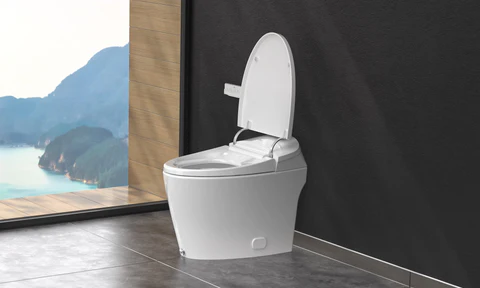Behind the scenes, the weight of everyday objects can be quite surprising. Have you ever wondered how much a toilet weighs? In this article, we’ll dive into the fascinating world of toilets and explore their weight, from traditional porcelain thrones to modern lightweight designs. Get ready to discover some unexpected facts and figures about toilets!
The Weight of Traditional Porcelain Toilets
When it comes to traditional porcelain toilets, weight is an important consideration. These fixtures are typically made from ceramic materials, which are known for their durability and strength. The weight of a standard porcelain toilet can vary depending on factors such as size, design, and manufacturing processes. On average, a traditional porcelain toilet can weigh between 80 and 120 pounds (36 to 54 kilograms). However, larger or more intricate models may weigh even more.
Factors Affecting Weight
The weight of a traditional porcelain toilet can be influenced by several factors, including:
- Size: Larger toilets with elongated bowls tend to be heavier than smaller round-shaped ones.
- Material Thickness: Thicker ceramic material used in certain designs can add to the overall weight.
- Water Tank Capacity: Toilets with larger water tanks can contribute to increased weight.
Additional Considerations
It’s worth noting that the weight provided above primarily reflects the weight of the toilet itself, without accounting for the weight of the separate components such as the water tank or the wax ring used for installation. These additional components can collectively add around 20 to 30 pounds (9 to 14 kilograms) to the toilet’s overall weight.
Lightweight Innovations in Toilet Design
Advancements in technology and design have led to the development of lightweight toilets that offer convenience and practicality. These innovative designs aim to reduce the weight of traditional porcelain toilets while maintaining their functionality and performance. Today, you can find lightweight toilets that weigh as little as 50 pounds (22 kilograms), significantly lighter than their traditional counterparts.
Materials and Construction
Manufacturers achieve weight reduction in lightweight toilets by using alternative materials and construction techniques. Some lightweight toilets are made from materials like vitreous china, which is lighter than traditional ceramic but still maintains strength and durability. Additionally, advancements in manufacturing processes allow for the creation of lighter toilet components while ensuring structural integrity.
Benefits of Lightweight Toilets
The introduction of lightweight toilets brings several advantages, including:
- Ease of Installation: The reduced weight makes installation less physically demanding, allowing for easier handling and positioning during the installation process.
- Reduced Structural Stress: Lightweight toilets place less stress on the bathroom floor and plumbing system, potentially extending their lifespan.
- Transportation Compatibility: The decreased weight makes it easier to transport lightweight toilets, making them ideal for remote areas or second-story installations.
Unconventional Toilet Weights
While traditional and lightweight toilets are the most commonly encountered, there are also some more peculiar toilet variations with different weights and designs.
Portable and Compact Toilets
Portable and compact toilets are designed for specific purposes such as camping, boating, or certain medical conditions. These toilets are made from lightweight materials like plastic, making them highly portable. Typically, portable toilets weigh anywhere from 3 to 15 pounds (1.4 to 6.8 kilograms), depending on their size and features.
High-Tech Toilets
In recent years, high-tech toilets have gained popularity due to their advanced features. These toilets often incorporate functionalities like heated seats, bidet functions, and automated cleaning systems. Although their weight can vary significantly, high-tech toilets typically weigh around 100 to 150 pounds (45 to 68 kilograms) due to additional components and complex mechanisms.
Conclusion
Toilets come in various shapes, sizes, and weights. Traditional porcelain toilets typically weigh between 80 and 120 pounds, while lightweight designs can be as light as 50 pounds. Factors such as size, material thickness, and water tank capacity contribute to the weight of traditional toilets. Lightweight toilets leverage alternative materials and construction techniques to reduce weight, offering installation convenience and compatibility. Additionally, peculiar variations like portable toilets and high-tech toilets showcase unconventional weights and designs. Next time you encounter a toilet, you’ll have a newfound appreciation for its weight and the engineering behind it.
“Next time you lift the lid on a toilet, take a moment to appreciate the weight and craftsmanship behind this functional necessity. Whether
heavy or light, toilets are a fundamental part of our lives, providing us with comfort and convenience. So, the next time you ponder the weight of a toilet, you’ll have a wealth of knowledge to ponder upon!”
Note: The weights provided in this article are approximate and can vary depending on manufacturers and specific models. Sources were consulted for general reference and industry knowledge.

